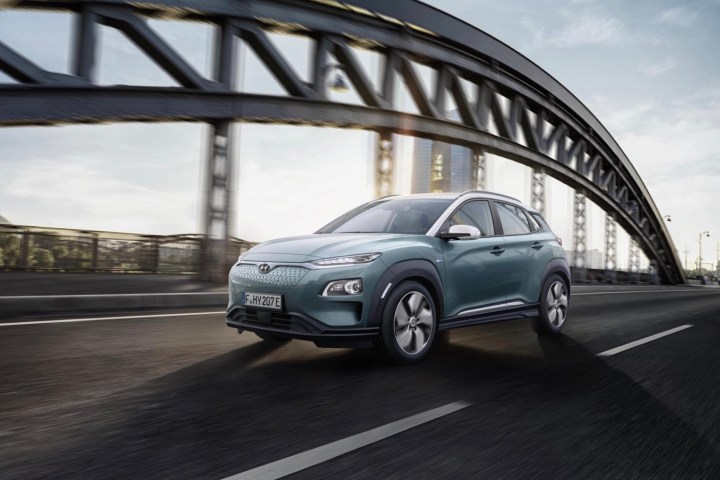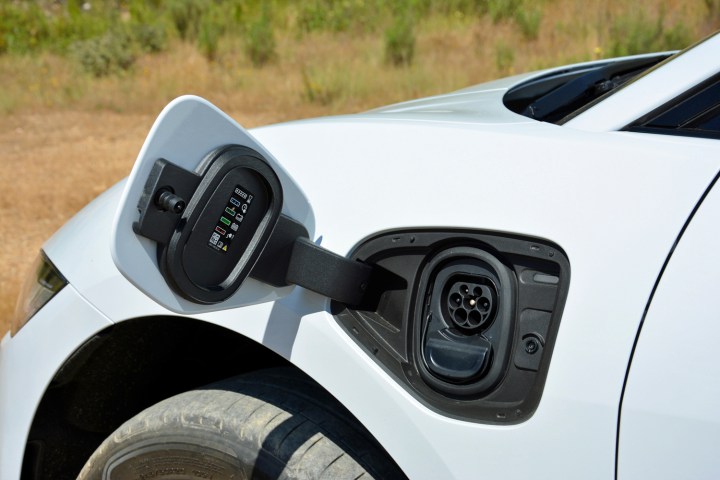Shopping for your first electric vehicle requires learning new terms, like kilowatts and CHAdeMO, and getting into the habit of keeping its battery charged on a regular basis. It’s not as daunting as it seems; It’s actually exciting.
Car shopping? Let us help
Electric cars aren’t just slow, boring golf carts anymore. They’re ultra-quick sedans, practical family cars, compact hatchbacks, luxurious SUVs, and, soon, they’ll be rugged off-roaders, too. If you’re looking into buying a new battery-powered model, or if you simply want to know more about the technology that powers them, our guide to purchasing an EV will help walk you through the entire process.
The different levels of electrification
Before you get carried away and overwhelmed with all the talk of batteries, zero emissions, hybrid this and electric that, know this: There are really only three types of green cars out there that you need concern yourself with — for now, at least.
Hybrid cars
Hybrid cars remain the closest thing to what you’re probably already driving. They use both a gasoline engine and an electric motor to help offset fuel costs by improving gas mileage. Because hybrid cars use gasoline as their primary source of power, all you need to do is fill your tank up like you normally would and drive off. Popular hybrid vehicles include the Toyota Prius and the Hyundai Ioniq, but the list of gasoline-electric models is getting long. Even the newest Mercedes-Benz GLS — a family-hauling, V8-powered behemoth — uses hybrid technology.
Plug-in hybrids
Plug-in hybrids dive further down the electrification rabbit hole. They are the middle child of the green car family. Relying on a bigger battery pack allows plug-in hybrid technology to power a car on electricity alone for short distances. Once the battery is depleted, the vehicle returns to being a regular, fuel-fed hybrid that recharges its batteries using kinetic energy, or using the gasoline-powered engine as a generator. However, you can also recharge the pack by plugging the car into any compatible charging station. Depending on your driving needs, you may be able to commute using electricity and only awaken the gas engine when you take a longer trip.
Electric vehicles (EVs)
EVs like the Nissan Leaf, the Hyundai Kona EV, the Audi E-Tron, and the Tesla Model 3 run on, you guessed it, electricity. The segment has come a long, long way over the past decade. While battery-powered models were once city cars at best due to their limited range, several options on the market can drive for over 250 miles on a single charge. The charging infrastructure has improved dramatically, too, and the technology has advanced as well.
Gotta spend green to go green — but Uncle Sam can help

Now that you know which types of green cars are out there, you can begin to decide which one is right for you. But before you do that, it might help to know how much they cost. Keep in mind the price of an electrified car can be quite high — it’s usually more than the price of a comparable, gasoline- or diesel-powered model. To add context, Hyundai charges $20,300 for the gasoline-powered Kona, and $37,190 for the electric model.
That’s a huge difference. But while a prohibitive entry price can scare some consumers away, the American government helps offset the difference by offering taxpayer-funded incentives to qualifying consumers. If you are eligible, the federal government will award you a cool $7,500 tax rebate for buying an EV. The only catch is that you need to have a one-year tax liability that exceeds that amount. Keep in mind the tax credit only remains in effect for a given manufacturer until it has sold 200,000 electric vehicles. Tesla buyers are no longer eligible to claim a tax credit from the federal government, though some states (and some cities) offer their own incentives.
Charging: Easy as Level 1, 2, 3
Now that you’ve decided on a car, you’re going to need to charge it up. There are three main charging types (or levels) supported by mainstream EV manufacturers.
Level 1
Level 1 charging refers to the use of any standard three-pronged household outlet, meaning you plug your EV into the same outlet you use to charge your smartphone. Virtually every EV on the market supports this type of charging, so it’s convenient. The bad part is that it’s painstakingly slow. For example, charging a Nissan Leaf using a standard 120-volt charger takes over 20 hours.
Level 2
Level 2 charging is much faster. This is the type of charging you will want to use most often, especially considering you can install a Level 2 charger (or pay to have one installed) right in your garage. To again use the Leaf as an example, a full charge using a 240-volt Level 2 charger takes between four and eight hours. You can get home from work at 7 p.m. and leave the next day at 7 a.m. with a full charge.
Level 3
Level 3 charging refers to the use of industrial-strength chargers capable of zapping a battery pack with an 80% charge in as little as 20 minutes. Not all EVs support this type of charging, and using it too often can damage the battery. Level 3 chargers are commonly found at public charging stations across America.
Charging speeds are constantly improving; Porsche’s Taycan packs an 800-volt charging system that takes about 22 minutes to zap the pack from 5% to 80% in ideal conditions. Alternatively, if you’re not in a hurry, many automakers and aftermarket vendors make wireless inductive chargers you can install in your garage to kiss your charging cord goodbye. They’re quick and easy to use, but charging wirelessly takes considerably longer than plugging in.
Charging times will vary depending on your battery’s state of charge, its age, and its mileage. The lithium-ion batteries that power a vast majority of EVs on the market in 2020 will lose their ability to hold a charge over time. In a 10-year period, the gradual loss could reach as much as 30%, though most EVs are backed by a solid warranty.
Charge from home, sweet home
If you’re serious about getting in on the EV scene, we strongly recommend getting a Level 2 charger installed in your home. While it’s possible to get by on a Level 1 charger (basically a wall outlet), or even by using public charging stations, nothing beats having a Level 2 charger nestled inside of your garage because you can charge overnight and leave with a full charge every morning. It’s like having a gas station on your property. Level 2 chargers run on 220/240 systems just like a household appliance, so most electricians can install one. You can even buy one through Amazon, and find an electrician through the retail giant. Kia and Audi are among the companies that have formed partnerships with Amazon to help EV buyers get the charger that suits them.
Know your (car’s) limits

Buyers cite range anxiety as one of the main reasons for not considering an electric model as their next car. And yet, an EV is often an adequate daily driver that can get you to and from work with ease. Most offer well over 100 miles of driving range, though there are some exceptions. The new EV with the least driving range is the Mini Cooper SE; it can travel for just 110 miles on a charge. At the other end of the spectrum, Tesla’s Model S offers an EPA-estimated 402-mile range. The best value for your money is either the Chevrolet Bolt or the Hyundai Kona, which offer 259 and 258 miles of range, respectively, while starting at under $40,000 before incentives.
You might not achieve the range figure stated by your car’s manufacturer, just like you might not hit the EPA’s miles-per-gallon number if you drive a gasoline-powered model. The final figure will largely depend on how and where you drive. The accessories you use during your commute and the outside temperature will also affect your range. The American Automobile Association (AAA) notably found that freezing temperatures decrease the range of an EV by about 40%.
A reality check on emissions
While EVs are proudly marketed as zero-emissions vehicles, keep in mind the electricity that powers them needs to come from somewhere. Electricity doesn’t grow on trees, after all. It sometimes comes from coal-burning power plants scattered across the country.
Drivers looking to get their energy from cleaner sources can harness the power of the sun by purchasing solar panels. Not only is this better for the environment, but it will help lower your electricity bill. Speaking of, EV owners should expect to pay more for electricity, but this will more often than not be offset by lower maintenance costs, and by the elimination of gasoline consumption. It’s important to remember that electricity rates vary state to state and can depend on whether or not you’re charging during peak times.



